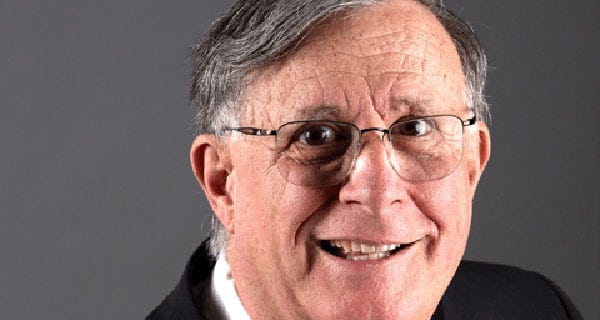Bob Schulz is a professor in the Strategy and Global Management (SGMA) and Business and Environment (BSEN) areas. He has been teaching at the Haskayne School of Business at the University of Calgary since 1973.
Calgary’s Business: What’s your sense of where Calgary’s economy is these days?
Schulz: In my opinion, Calgary’s economy is currently in a transition period, which is uncharted territory. Over the past 50 years, Calgary business leaders expected that the oil and gas energy sectors were cyclical industries, with world oil demand and North American natural gas demand gradually increasing each cycle and catching up with oversupply. The trough of the cycle often was about three years, with oversupply rebalancing with demand at higher volumes and always a significant risk premium applied for geo-political risk of supply disruptions.
Few people foresaw fracking applications that dramatically reduced the cycle recovery speed for significant new supply volumes. Few people foresaw the activist challenges restricting Alberta’s shortage of oil pipelines south and west, and the major discounts on Western Canadian Crude to the West Texas Intermediate oil prices. Few people foresaw the surprising stability of global oil supply from Venezuela, Nigeria, Iran and Iraq. Few people foresaw the impact of LNG clipping the peaks of profitable winter and summer natural gas prices. Few people are aware of the massive energy resources that can be developed elsewhere in the world – using advanced Alberta technology. Few people foresee the future destruction of energy demand that’s driven by global government subsidies, advanced storage technologies, and low-cost Chinese solar panels.
The external factors driving Calgary’s economic future will be different than the economic past, unless there’s a major global oil supply disruption for more than 24 months.
CB: Is Calgary too dependent on the oil/gas economy?
Schulz: This is a glass-half-empty, glass-half-full question. Calgary is still somewhat dependent on the traditional oil/gas economy. However, needed major awareness, attitude and vision changes are underway in order to provide the Calgary 2.0 needed for our future generations. Rather than relying on external energy prices and Canadian and provincial government policies driving Calgary and Alberta economies, there’s emerging a new entrepreneurial spirit to mould, shape, and create our economic future.
CB: Many want Calgary to diversify its economy. What’s your take on that?
Schulz: In my opinion, diversification is not a strategy, but is the aggregated result of an entrepreneurial business mindset and collective action, which is not overly dependent on city or provincial leaders. While many may want Calgary to diversify its industry, my view is that we need fewer wishful economic spectators and greater vision and action by business leaders to move the economic needle for all Calgarians.
CB: What can we do in this city and province to promote and support a more entrepreneurial environment?
Schulz: We need to recognize that, compared to the past decades, there are now many excellent current entrepreneurial supports for grants and growth capital for emerging non-energy and energy technologies. These supports include federal Scientific Research and Experimental Development matching company cash (for private companies) or tax credits (for public companies) for virtually every Alberta company doing something new.
There are individual Alberta tax reductions available for growth capital investments in approved companies and matched Alberta Enterprise funding for 12 venture capital firms to open and/or and expand Alberta offices. The Alberta Centre for Advanced Manufacturing for MNT Products has the testing and small-scale manufacturing capability to help entrepreneurs to move from innovation to proof-of-concept to early-stage sales for startup manufacturing companies.
Startup mentorship and coaching is available through the Canadian100 in Silicon Valley, Alberta100, Chen Fong and Alice Reimer-led Creative Destruction Lab at the Haskayne School of Business, Innovate Calgary and Hunter Hub at the University of Calgary, Calgary Technology Inc., and more than a dozen other business incubators and accelerators. Brad Zumwalt, Jim Gibson and Mark Blackwell are driving the weekly Rainforest ecosystem development meetings to connect people, and there are at least five large office spaces available for clusters of startups.
CB: Your thoughts on how Calgary can move forward to achieve a better economic environment?
Schulz: Why think small, when we could think big? Why go slow, when we could go fast? The Calgary “dots” already exist for connecting, leveraging, collaborating, and scaling existing world-class Calgary technology companies to grow into world-class business clusters employing thousands of Calgarians.
ATCO, Alberta Treasury Branch, Suncor, CNRL, Cenovus and other energy companies have the low-cost combined capability to collaborate with each other and with existing Calgary technology companies to provide a provincial utility using existing Calgary-developed solar-powered high-speed wireless data pipelines and artificial intelligence for industrial Internet of things, unmanned vehicles and drones, and artificial intelligence infrastructure that will lower individual energy company costs and improve environmental monitoring for both energy companies and the Alberta Energy Regulator.
At the same time, this consortium would improve access to education, job skills, and wellness for Wood Buffalo, Fort McMurray and First Nations. Imagine funding coming from the private equity funds of energy icons, and an industry-driven consortium that is matched by the provincial carbon fund, AIMCo, federal government carbon fund, and federal government cluster fund. The rest of the natural resource world awaits our solution to solve their challenges.
Global medical pill and surgery solutions currently provide costly and often ineffective solutions to assess and rehabilitate many health and wellness conditions such as concussions, headaches, psychiatric conditions, post-traumatic stress disorder, hyperactive attention deficit disorder, fibromyalgia, and chronic fatigue syndrome.
More than 40 per cent of homeless people were productive and then suffered brain injuries before becoming homeless. Alberta Health Services spends $100 million each year on disability claims for its own employees. Calgary’s rich ethnic DNA mosaic is likely the most accessible in the world for a combination of clinical data and DNA that could scale globally.
Imagine the collaborative strength of Calgary-based Myosymmetries, the world’s leading neuropsychology clinic using no-drugs no-needles brainmapping and biofeedback technology for ‘head’ cases and the Hotchkiss Brain Institute at the Cumming School of Medicine. This combination could save Alberta tens of millions of dollars for direct and indirect costs and, at the same time, be a business that serves the world via Internet for ‘head’ problems and opportunities. Imagine if all the national-level music therapy and meditation people connections in Calgary were connected and used real-time monitoring of essentially non-invasive modalities to brain rehabilitation.
Imagine a Calgary-based online learning cluster with a global reach for the explosive learning skill markets leading to jobs all over the world and that has already won global awards. Calgary-based RoboGarden was selected as one of the top-50 global startups among more than 50,000 applicants for the Google Tech Grind and already has global distribution channels for cloud-based and decentralized coding and robotics skills and is available in six different languages.
Imagine the combination with Calgary-based Global eTraining, which is the number one global distributor for their Generator training and learning platform used by engineers and architects for AutoDesk, the world’s number one design software used for everything from houses to refineries.
Imagine coupling Calgary-based Benevity, whose software moved $1 billion in matched 2017 donations from Microsoft and Google with the solutions for refugees developed by MBA student social enterprise teams that won global competitions in Dubai, United Nations in New York, and Vatican City.
Imagine coupling Haskayne EMBA student teams that have won seven gold medals and three silver medals in a total of 12 different Innovation Olympics competitions against the best MBA schools in the world, working on consulting projects for global companies. Imagine using the Boston-based IXL Center software used for the Innovation Olympics and 5000 SMEs in Colombia with Alberta companies receiving grants and/or venture funding.
Imagine – Calgary’s economic future is already here!
– Mario Toneguzzi
Respected business writer Mario Toneguzzi is a veteran Calgary-based journalist who worked for 35 years for the Calgary Herald in various capacities, including 12 years as a senior business writer.
![]() The views, opinions and positions expressed by columnists and contributors are the author’s alone. They do not inherently or expressly reflect the views, opinions and/or positions of our publication.
The views, opinions and positions expressed by columnists and contributors are the author’s alone. They do not inherently or expressly reflect the views, opinions and/or positions of our publication.
Calgary’s Business is a Troy Media Digital Solutions Associate website



